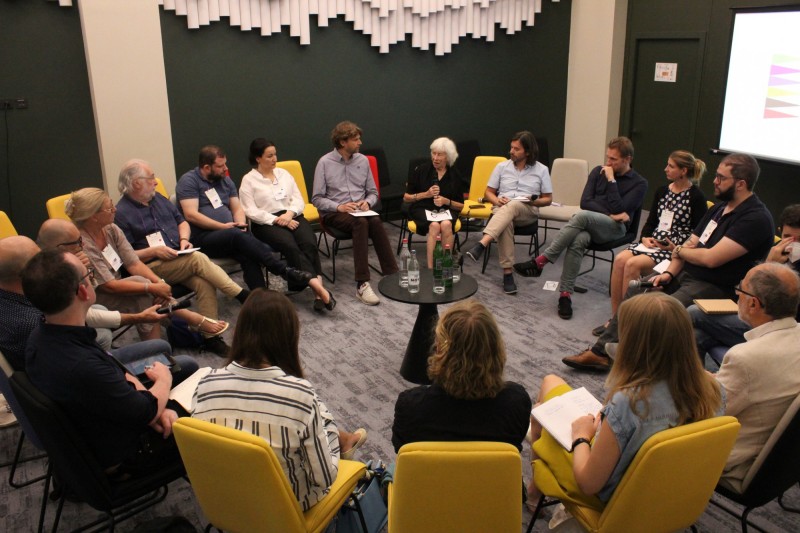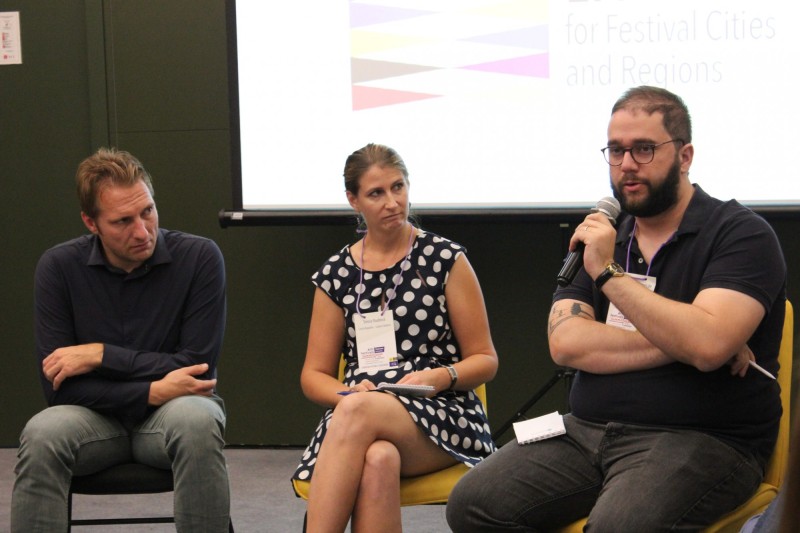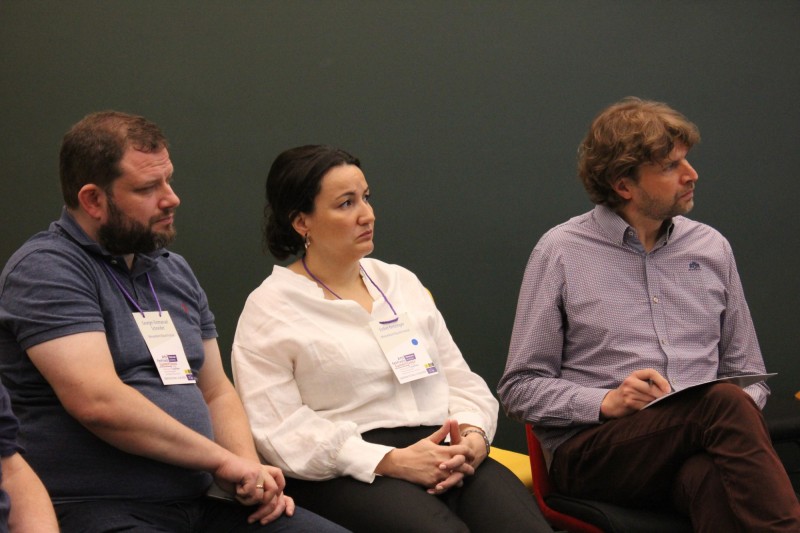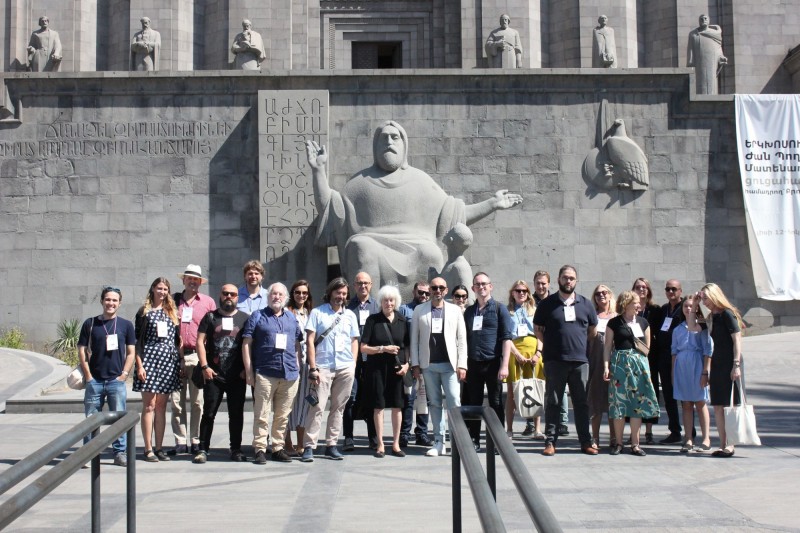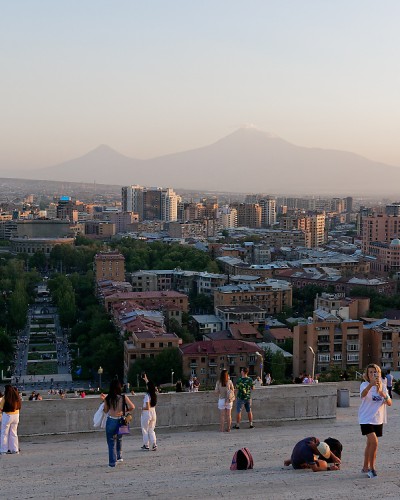Mon compte-rendu du Festival Cities Workshop
L’Association européenne des Festivals organisait son sommet 2022 à Yerevan (Arménie). Dans le cadre de son initiative EFFE Seal for Festival Cities and Regions, avec plusieurs élus de villes européennes et d’acteurs culturels, j’ai conçu avec Nele Hertling un atelier dont je partage ici mon compte-rendu (en anglais) et d’autres documents.
Festival Cities Workshop
12 September 2022, 9.00-11.30
Nele Hertling and Nicolas Bertrand, members of the A Soul for Europe Strategy Group, conceptualized and facilitated the Festival Cities Workshop. This workshop was held in conjunction with the launch of the EFFE Seal for Festival Cities and Regions and aimed to foster a more inclusive environment for citizens and civil society in local politics. Additionally, it sought to explore how arts and arts festivals can drive this process.
On Sunday, the group was taken on an inspiring Walk and Talk tour of Yerevan, visiting a variety of cultural institutions, such as the Aram Khachaturian House-Museum, Sergei Paradjanov Museum, Cafesjian Center For The Arts, and the National Gallery.
Opening of the workshop
Péter Inkei initiated the session by providing an overview of the findings from the study on festivals and cities' expectations from the EFFE Seal. He presented it as a novel instrument for linking cities and their festivals, offering the potential to reinforce commitments to the shared European values. He highlighted the many ways festivals can benefit cities, which ranged from boosting vibrancy and cohesion amongst the inhabitants to transforming the identity and brand of the city. Surprisingly, the choices made by cities and festivals were more symbolic than the prosaic or technical qualities typically associated with them.
Nele Hertling and Nicolas Bertrand followed up by facilitating a free conversation in a circle with representatives from Belgrade, Dublin, Tehran, Brno, Kraków, Birgu, Leeuwarden, Brussels, Lyon, Berlin, Bergen, and other cities, who were invited to provide concrete examples of projects related to the EFFE Seal for Festival Cities and Regions. Several participants were also following the conversation online
Which artists currently best captures the spirit of your city?
The street arts graffiti scene of Belgrade can be a reflection of its soul. In Dublin too, this art form has become extremely popular - despite being contested in city planning - and is viewed as a source of pride and an attraction for tourists.
Musician Denise Chella, as other hip-hop artist of migrant origin, can stand for all changes occuring in the Irish society. Likewise, in Tehran, theater director Hamid Pourazari is lauded for his ability to bring together members of various social groups on stage and in the audience, unlike arts festivals which are very exclusive.
Places too can truly embody the spirit of their city, such as the legendary "Bar that doesn't exist" in Brno or "Pod Baranami" jazz club in Kraków, which bring together people of all ages, both locals and visitors alike. In Malta, a nation that has been independent since 1964, no artist seem to truly capture the essence of the country. However, a restaurant in Birgu has managed to reflect a genuine flavor of the still in progress Maltese identity.
Festivals can showcase the diversity of both their city and Europe as a whole by their artistic offerings and the variety of local communities they attract. They may be seen as a vivid manifestation of a city's ever-evolving, mixing identity, which stands in contrast to the static nature of the national identity. These events, seen as living labs, offer a unique opportunity to explore the potential future of the city.
What is a festival, beyond an artistic programme?
Kraków has between 80 and 100 festivals each year, of various sizes and across all genres of creativity. The city's strategy is to encourage collaboration and complementation between these events, which has proven invaluable in times of unexpected crisis, such as the COVID-19 pandemic and the influx of Ukrainian migrants.
In Birgu (Vittoriosa), the importance of place is of utmost significance. With a population of just 3,000 inhabitants, the city relies largely on private initiatives to organize cultural events. They receive modest support from the local Council, due to the lack of resources and the limited ability to find new funding. The streets and historical buildings of Birgu - such as the Knights of the Order of Malta, shelters from the British army and palaces of the Inquisition - are now the sites for many outdoor events. These cultural activities have become a source of pride for the people of Birgu, providing a sense of community and of a common history despite the fact that the city was heavily bombed during World War II.
European festivals may have an important role to play beyond the actual event itself to reach their full potential as community changer, by providing a context for year-round activities or offering a meeting place for a variety of social groups.
What are the spaces for dialogue between your municipalities, festivals and citizens ?
Examples from Leeuwarden and Bergen were presented, illustrating how municipalities are collaborating with festivals to address social issues such as poverty and cultural diversity, as well as promoting sustainable development. The aim is to engage festivals in a continuous dialogue about these issues, while providing public spaces for festivals and grant incentives, without compromising their artistic programming. However, this can potentially create tension with the local arts scene, which may feel more obligated to serve a social purpose than to shape the future of society.
In Kraków, the Jewish Cultural Festival is a collaborative effort between multiple institutions ranging from heritage conservationists to public libraries, movie and music festivals, taking place within the historic Jewish quarter of the city's center. It is a good opportunity both to adress issues related to the history of Kraków and the Jewish diaspora, artistic creation, contemporary issues that reaches both a local and international audience. Given the Municipality’s support of existing established festivals, how to provide supplementary support to new festival initiatives?
The city of Guimarães, when preparing its European Capital of Culture candidacy, established a meeting place where citizens, artists, and representatives of local authorities could collaborate in creating projects that would further the objectives of social cohesion and solidarity.
In a similar approach, the Brussels 2030 projects seeks to structure the city's future through the implementation of a youth parliament, the cooperation of local stakeholders to outline an idea of futur public spaces and activities to inspire the collective imagination of the city.
This open and lively conversation continued with the presentation of the FestivalFinder.eu website.
Video recording (youtube)
Programme and other documents on the EFFE Seal
